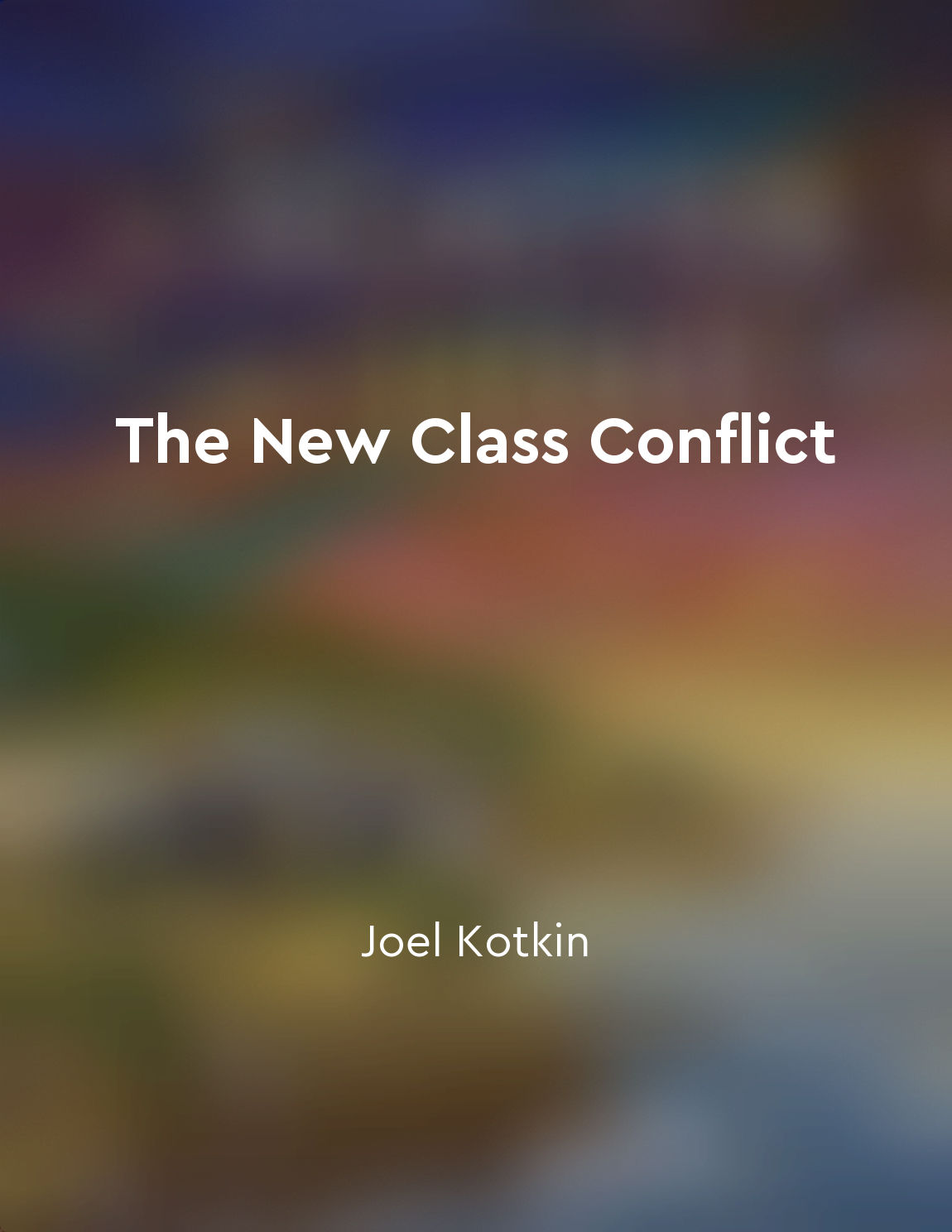Potential for social unrest from "summary" of The New Class Conflict by Joel Kotkin
The potential for social unrest lies in the growing divide between the entrenched elites and the struggling middle and working classes. This gap has widened due to the concentration of wealth and power in the hands of a few, while the majority of people see their economic prospects diminishing. The new class structure, characterized by a technocratic elite and a precariat class, has created a sense of alienation and frustration among those who feel left behind. The technocratic elite, consisting of professionals, financiers, and technologists, have amassed wealth and influence through their expertise and connections. They control the levers of power in government, business, and academia, shaping the policies and decisions that affect the rest of society. On the other hand, the precariat class, made up of contingent workers, service industry employees, and gig economy workers, struggle to make ends meet in an economy that offers little stability or security. The disconnect between the elite and the precariat has led to a sense of resentment and disillusionment among the working and middle classes. They see the elite as out of touch with their concerns and indifferent to their struggles. This sense of alienation is exacerbated by the cultural divide between the cosmopolitan, progressive values of the elite and the more traditional, conservative values of many in the working and middle classes. As the gap between the haves and have-nots continues to widen, the potential for social unrest grows. The disaffected majority may express their frustration through protests, strikes, or other forms of collective action. The rise of populist movements and leaders around the world is a manifestation of this discontent, as people seek alternatives to the status quo that has failed to address their needs. If the divisions between the elite and the rest of society are not addressed, the potential for social unrest will only increase. It is imperative for policymakers, business leaders, and other decision-makers to recognize the growing discontent and work towards creating a more inclusive and equitable society. Otherwise, the consequences of this new class conflict could be dire for everyone involved.Similar Posts
Economic models can explain patterns of discrimination
Economic models provide a framework for understanding discrimination by examining how individuals and firms make decisions base...
Communism will eliminate class distinctions
The essence of communism lies in the promise of a society devoid of class distinctions. This fundamental tenet of the communist...
Discrimination leads to limited opportunities for marginalized groups
Discrimination against marginalized groups results in a lack of access to opportunities that are essential for economic success...
The cycle of exploitation continues unchecked
The cycle of exploitation that plagues many developing nations is a vicious one, perpetuating a system of inequality that benef...
The rise of social media has democratized access to power
The dizzying ascent of social media has fundamentally altered the landscape of power dynamics in today's world. In the past, ac...

Necessity of redefining social mobility
In today's rapidly changing world, the traditional notion of social mobility is no longer sufficient to accurately capture the ...
Communism leads to the liberation of all people
The central idea put forth by Marx and Engels is that under a communist system, all individuals will be freed from the oppressi...
Predatory loan sharks targeting immigrants
In the squalid districts of Packingtown, there lurked a sinister breed of men who preyed upon the vulnerable and desperate. The...
They exploit resources for corporate gain
The powerful corporate interests that I worked for had a singular goal in mind: to extract valuable resources from developing c...
Privatization of public services
The shock doctrine is the strategy of using a crisis to push through radical pro-corporate policies. One of the key components ...
